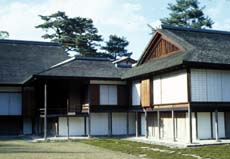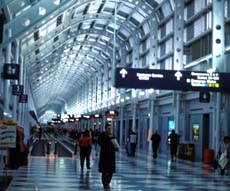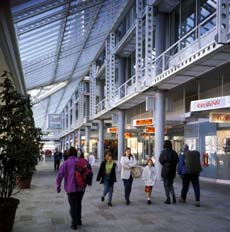Augé on "non-places"

Tokyo International Forum

Village of Tomintoul, Scotland

Katsura villa, Kyoto

Terminal One at O'Hare airport

Waterloo Station, London
[But if one defines "place"] as relational, historical and concerned with identity, then a space which cannot be defined as relational, or historical, or concerned with identity will be a non-place. The hypothesis advanced here is that supermodernity produces non-places. (78)
What we call non-places, in opposition to the sociological notion of place, associated by Mauss and a whole ethnological tradition with the idea of a culture localized in time and space. The installations needed for the accelerated circulation of passengers and goods (high-speed roads and railways, interchanges, airports) are just as much non-places as the means of transport themselves, or the great commercial centres, or the extended transit camps where the planet's refugees are parked. (34)
A person entering the space of non-place is relieved of his usual determinants. He becomes no more than what he does or experiences in the role of passenger, customer, or driver. . . . The space of non-place creates neither singular identity nor relations; only solitude, and similitude. There is no room for history unless it has been transformed into an element of spectacle, usually in allusive texts. (103)
Place and non-place are rather like opposed polarities: the first is never completely erased, the second never totally completed. . . . But non-places are the real measure of our time. (79) Augé 1995